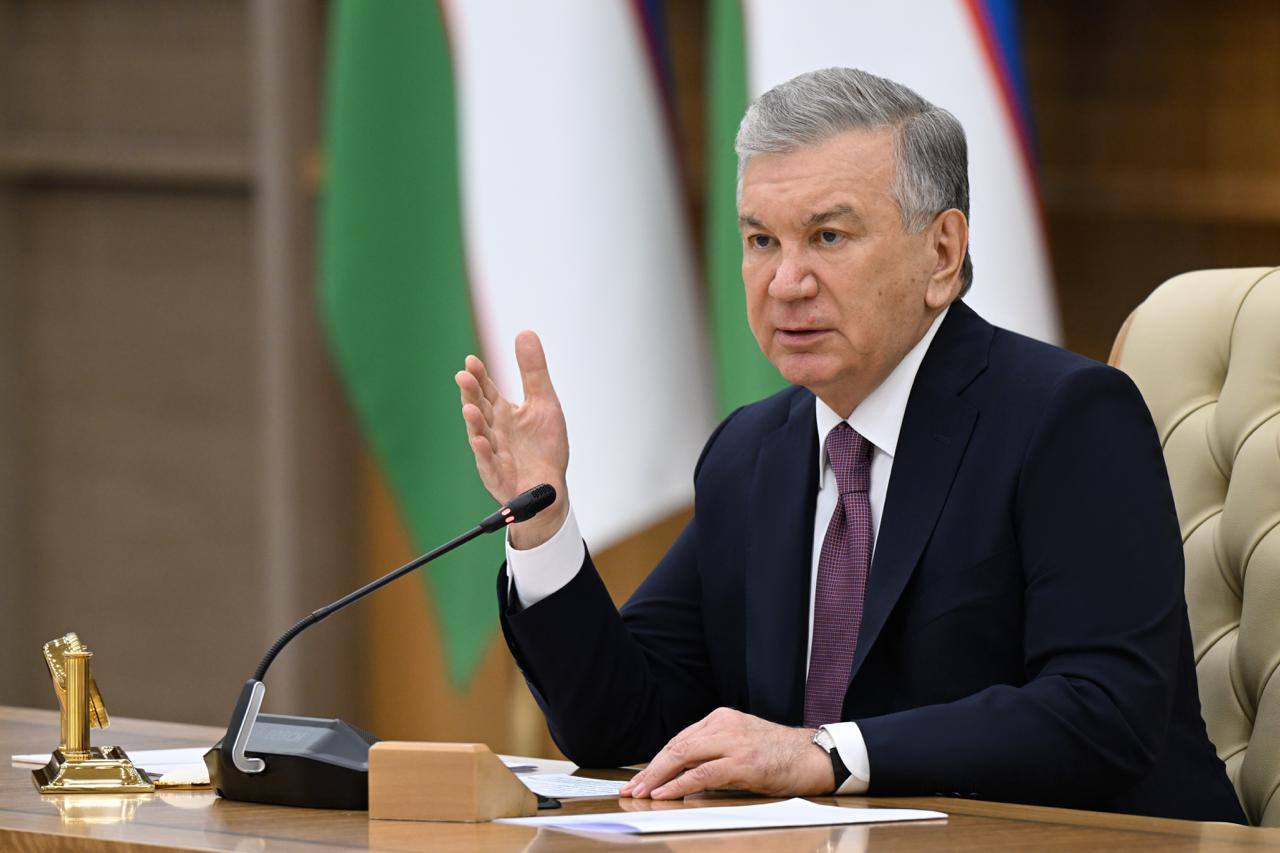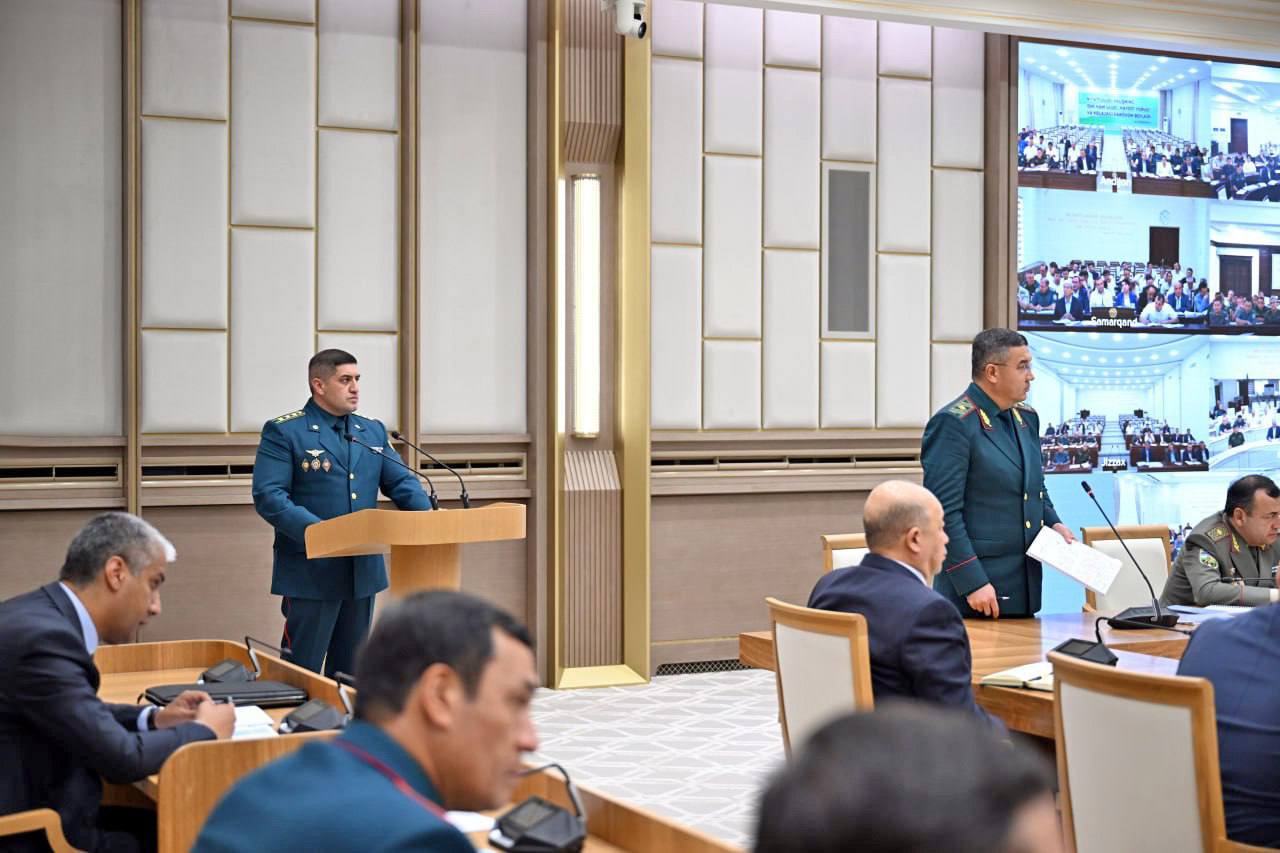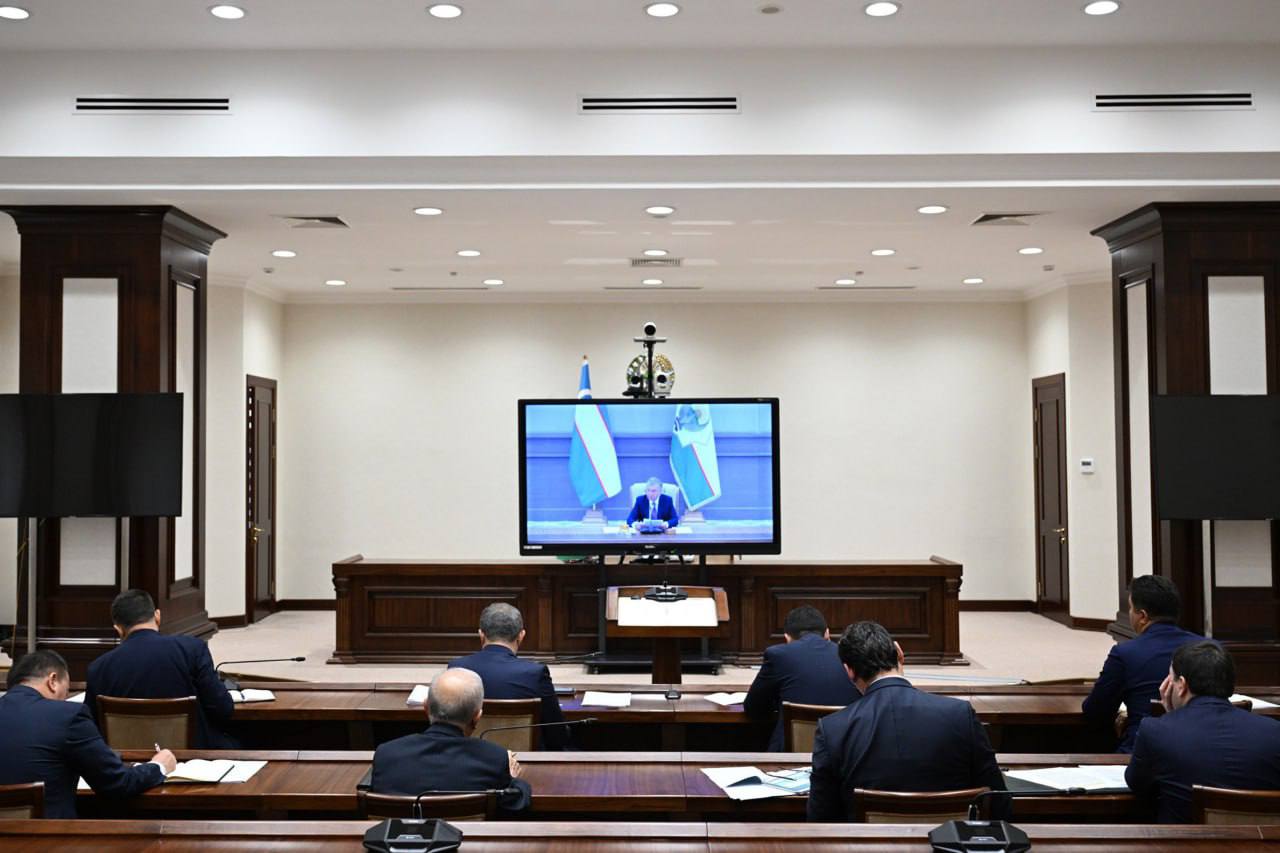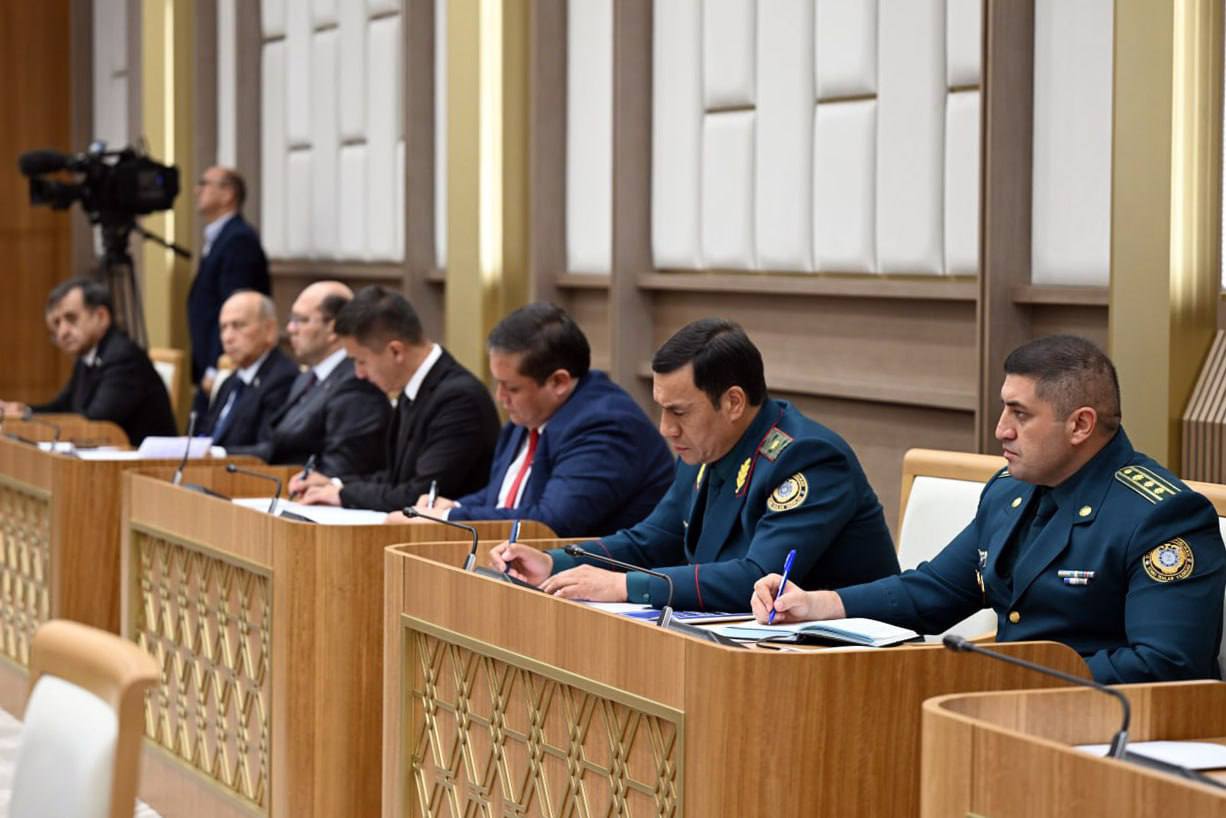Additional measures adopted to ensure road traffic safety
12.07.2025

On July 9, 2025 under the leadership of President Shavkat Mirziyoyev, a video conference meeting was held to discuss measures to ensure road traffic safety, improve infrastructure, and reduce congestion.
Certain work is being carried out in the regions in this regard. In recent years, 61 trillion soums have been allocated for road construction and repair — 3.5 times more than the funding provided before 2017.
An online complaint system was launched, resulting in a 50% reduction in visits to road safety divisions. A total of 3,365 employees in this sector have been provided with electronic tablets and body cameras. A system for detecting and processing traffic violations using artificial intelligence has been implemented. Special lanes for public transport have been designated in cities.
Last month, several relief measures for drivers were also introduced. For example, first-time offenders are now warned instead of fined. The practice of recording lane line violations by cameras has been abolished. In the evenings, other drivers are allowed to use lanes reserved for public transport. Daytime road repairs in cities have been prohibited. Installing a road sign where a speed radar is located has been made mandatory.
However, many pressing issues remain in this field — primarily, road traffic accidents. Last year, 9,364 such incidents occurred, injuring nearly 9,000 citizens. Most tragically, 2,203 people lost their lives.
"The fact that every fourth accident results in a fatality — or that on average six people die daily — should seriously concern us all," said Shavkat Mirziyoyev.
Traffic safety primarily depends on the condition and convenience of roads. In many districts, improved road infrastructure has reduced the likelihood of accidents. However, in 20 regions, the number of traffic accidents remains high. Overall, the damage caused by such incidents amounts to an average of 0.4% of the country's GDP.
Therefore, it was announced at the meeting that a National Program “Safe Roads” will be launched. For this purpose, the Republican Fund for "Safe Roads and Safe Pedestrians" will be reorganized and brought under government control. It is estimated that this year the fund will receive 400 billion soums from various sources.
In addition, each region will have a separate account for the fund. Enterprises responsible for installing road signs, traffic lights, and road markings within the Ministry of Internal Affairs system will be transferred under regional control.
The fund’s activities will be transparent, involving heads of regional traffic safety departments and road administrations, as well as representatives of the public. The fund's resources will primarily be directed to eliminate accident-prone hazardous areas. This work will begin with 23 highway sections totaling 175 kilometers that are currently considered dangerous.
Separate funds for developing road infrastructure have been created in all districts. An electronic portal will soon be launched to collect public opinions on roads. Through this portal, citizens will be able to vote for where signs, pedestrian crossings, or traffic lights are needed. Photos and videos of the completed work will also be uploaded to the portal for the public to assess.
Using these tools, the goal is to improve traffic flow and drastically reduce severe accidents.
Another issue is that although there are more than 1,200 U-turn spots on the roads, only 146 have underground or overpass crossings. Out of over 10,000 pedestrian crossings, only 154 offer such facilities.
Therefore, the Ministry of Transport has been tasked with, together with the World Bank, diagnosing whether the international highways Tashkent–Samarkand–Termez, Tashkent–Fergana Valley, and Samarkand–Bukhara meet safety requirements. Based on this analysis, projects will be developed to ensure safer U-turns and pedestrian crossings and to optimize road signs and markings.
Currently, there is no well-organized intercity public transport system in the country. Buses usually depart not according to a fixed schedule but only when 40–50 passengers have boarded.
Therefore, measures to develop medium- and long-distance public transport were defined at the meeting. There will be a separate approach for trips between Tashkent city and the regions.
Firstly, the capital’s public transport will be integrated into a single agglomeration system, covering all adjacent areas of the Tashkent region. To this end, 20 bus routes that currently reach the outskirts of the capital will be extended by 15–20 kilometers, and 6 new routes will be added. By September, 200 new buses will arrive in the capital, and next year another 1,000 will be added. As a result, it is expected that the number of private cars entering Tashkent will decrease by 25,000.
Secondly, intercity and interregional public transport services will be improved. Subsidies will be provided per passenger for buses and minibuses on these routes. The exemption from the utilization fee for buses will be extended for another three years and will also apply to minibuses. Duty exemptions for tourist buses and minibuses will also be valid for three years when used as public transport.
It is well known that one of the causes of congestion is the lack of parking spaces. As a result, in Tashkent and other major cities, drivers are forced to park on the roadside. Some streets near ministries, government agencies, and local administration offices are blocked off.
Officials have been instructed to put an end to such practices and remove unjustified prohibitive signs from streets near all organizations and neighborhoods.
The Ministry of Transport has also been tasked with creating an electronic platform to communicate with drivers and study their problems.
Improving driving culture on the roads is another urgent issue. Last year, nearly 20 million traffic violations were committed. Some drivers have become repeat offenders.
To tackle this, the “Chronic Violators” program will be launched to demonstrate the force of the law to persistent offenders. Those repeatedly committing violations such as driving in the opposite direction, running red lights, or speeding will not receive any fine discounts for up to one year. If a driver commits more than 10 such violations in a month, they will be deprived of their driver’s license for up to six months. Those who exceed the speed limit by two to three times may face license revocation.
In some cases, fines are being issued months after the violation, leading to misunderstandings and complaints. From now on, if no decision is made within a month of the violation, the driver will not pay any fine.
The new system for driver training has begun to yield results. However, pedestrians — especially the youth — need to improve their knowledge and discipline in this regard. For this purpose, traffic safety programs in schools and kindergartens will be updated. The “Green Light” competitions will be revived, and the national winners will receive gifts from the President. Video and animated content about traffic rules will also be created.
During the meeting, reports from responsible officials on the implementation of these tasks were heard.











